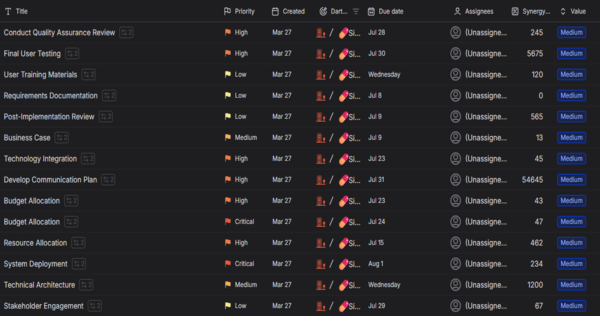Have you noticed how some construction projects flow smoothly to completion while others spiral into endless setbacks? The key is structured progress tracking. Studies show that projects with systematic progress reporting reduce delays and improve stakeholder confidence.
Our construction project progress report template simplifies project tracking, helping you monitor milestones, identify risks, and keep clients informed - without drowning in paperwork.
Why Construction Progress Reports Matter
Most reports just list completed tasks. A true progress report goes deeper - tracking timelines, budgets, risks, and stakeholder communication to ensure projects stay on track.
Think of it as a real-time dashboard for your project’s health. It turns raw data into actionable insights, ensuring transparency and accountability at every stage.
Our template balances detail with clarity, making progress reporting efficient and impactful.
Key Elements of the Construction Project Progress Report
Just like blueprints guide construction, these key elements structure your progress reporting. Each section serves a distinct purpose in tracking, analyzing, and communicating your project's status:
1. Project Overview & Current Status
Get a snapshot of progress with critical updates:
- Project name, location, and phase
- Reporting period (weekly/monthly)
- Overall completion percentage
- Key milestones achieved
2. Work Completed vs. Planned
Track actual vs. scheduled progress to spot delays early:
- Completed tasks (with photos/documents)
- Upcoming tasks (next 1-4 weeks)
- Variance analysis (reasons for delays)
3. Budget & Cost Tracking
Manage cost ovespends with real-time financial updates:
- Approved budget vs. actual spend
- Change orders & approvals
- Forecasted expenses
4. Risk & Issue Log
Proactively manage challenges before they escalate:
- Identified risks (safety, weather, supply chain)
- Mitigation steps taken
- Pending resolutions
5. Quality Control & Inspections
Ensure compliance and standards are met:
- Inspection results (pass/fail)
- Non-compliance issues & fixes
- Certifications & approvals
6. Stakeholder Communication
Keep clients, contractors, and teams aligned:
- Meeting summaries
- Client feedback & approvals
- Pending decisions
7. Next Steps & Action Items
Turn data into clear project workflow:
- Priority tasks for the next period
- Responsible parties & deadlines
- Required resources
How to Implement the Progress Report

A report is only useful if it drives action. Follow these best practices:
- Frequency: Weekly for fast-paced projects, bi-weekly for steady progress.
- Team Involvement: Project managers, site supervisors, and client reps should contribute.
- Visual Aids: Use Gantt charts, progress photos, and graphs for clarity.
- Review Meetings: Discuss reports in weekly stand-ups to address bottlenecks.
Benefits of Structured Progress Reporting
Companies using this template report:
- Fewer delays due to early risk detection
- Stronger client trust with transparent updates
- Better budget control with real-time tracking
- Higher team accountability with assigned action items
Download Your Construction Project Progress Report Template
Turn chaotic updates into structured, actionable reports. Get the template now and keep your projects on time, on budget, and on track.







